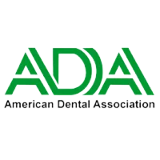Teens should begin orthodontic treatment between the age of 11 and 13, especially if they experience oral problems such as a bad bite, tooth gapping, or misaligned teeth. During adolescence, the body is still growing and developing, making it more malleable to work with. Today, there are a variety of orthodontic treatment options, such as traditional metal braces, clear braces, and clear aligners. Teens can rest easy knowing that whichever appliance their treatment plan requires, it will improve their appearance and facial function in a short period of time.
Types of Orthodontic Appliances
It’s important to know that oral problems requiring orthodontic treatment do not improve over time; they actually get more difficult to treat. Below are several orthodontic treatment options from which you can choose:
- Clear aligners: Perfect for patients who desire a more discreet way of correcting their teeth, clear aligners use transparent plastic trays to fix mild to moderate orthodontic problems. Even though they are removable, you will need to wear them often, no less than 20 to 22 hours a day. Teens will need to decide if they will be diligent in wearing them enough so that they are effective.
- Ceramic braces: These braces are attached to each tooth and connected with an archwire. Teens won’t have to worry about how much time they’ve worn them because they straighten their teeth all day, every day. Their treatment plan will also move forward smoothly. Ceramic braces are a common alternative to clear aligners as they use tooth-colored material.
- Lingual braces: Similar to braces that also use brackets and wires, these braces are placed on the back of the teeth facing your tongue, rather than the front of your teeth. Lingual braces are used for correcting teeth misalignment, and they are also almost completely invisible.
- Self-ligating braces: These braces look like traditional braces; however, they lack the ligature, which is the elastic that is wrapped around traditional braces. Clips and brackets encourage your teeth to move in their correct places. Self-ligating braces have also been known to produce less pain and discomfort.
- Metal braces: An orthodontist’s go-to for treatment, metal braces are great for teeth that move significantly. Clear aligners cannot do the same. With the advancements of technology, traditional braces are lighter and more versatile.
- Growth modification appliances: Most commonly used on younger patients, growth modification appliances help correct an overbite without tooth extractions. Since this appliance modifies the growth of bone, it is the perfect choice for teens and children who are still physically developing, as their bone tissue is more pliable. This treatment is also used for patients who have an underlying jaw discrepancy due to genetics, trauma, or bad habits.












